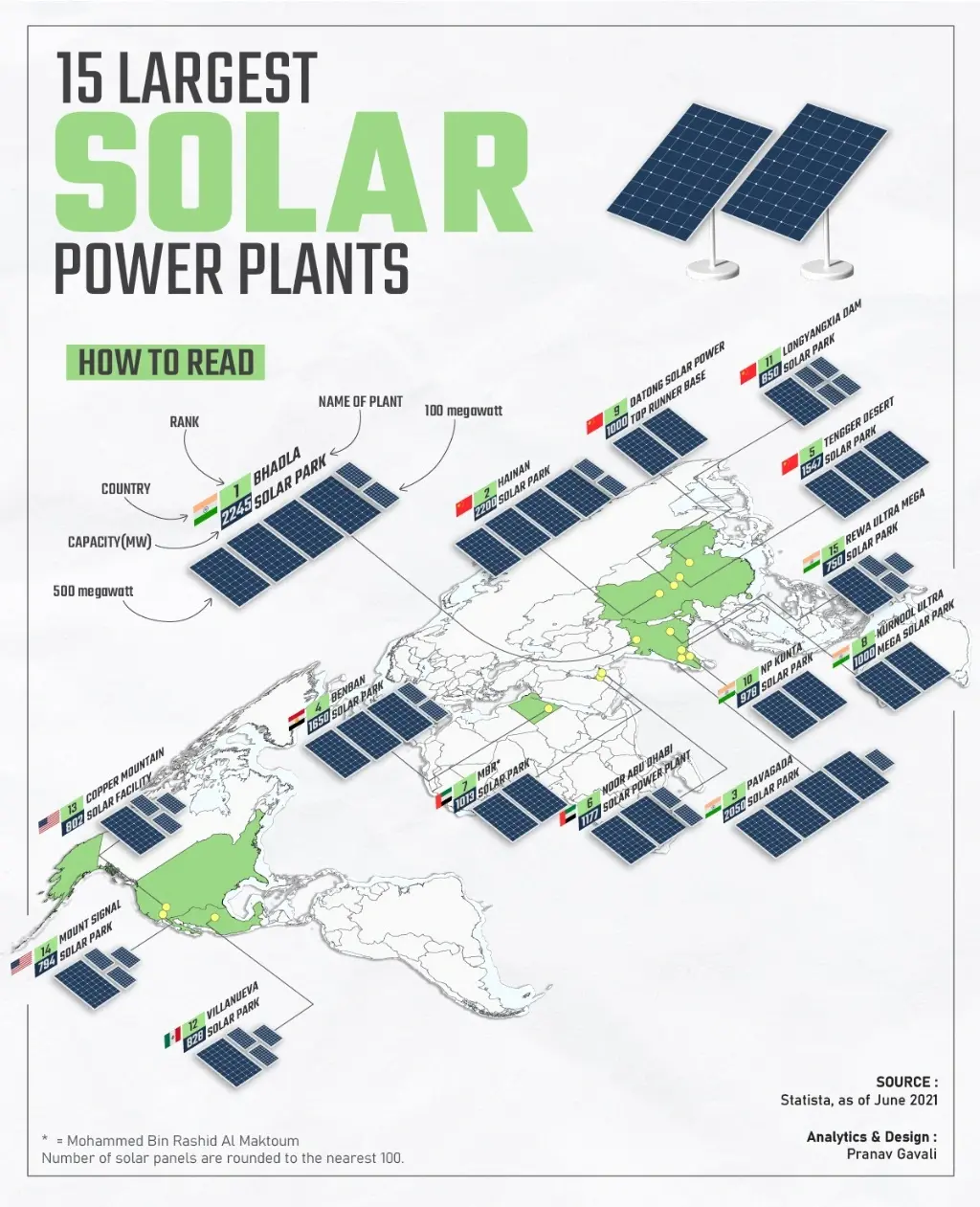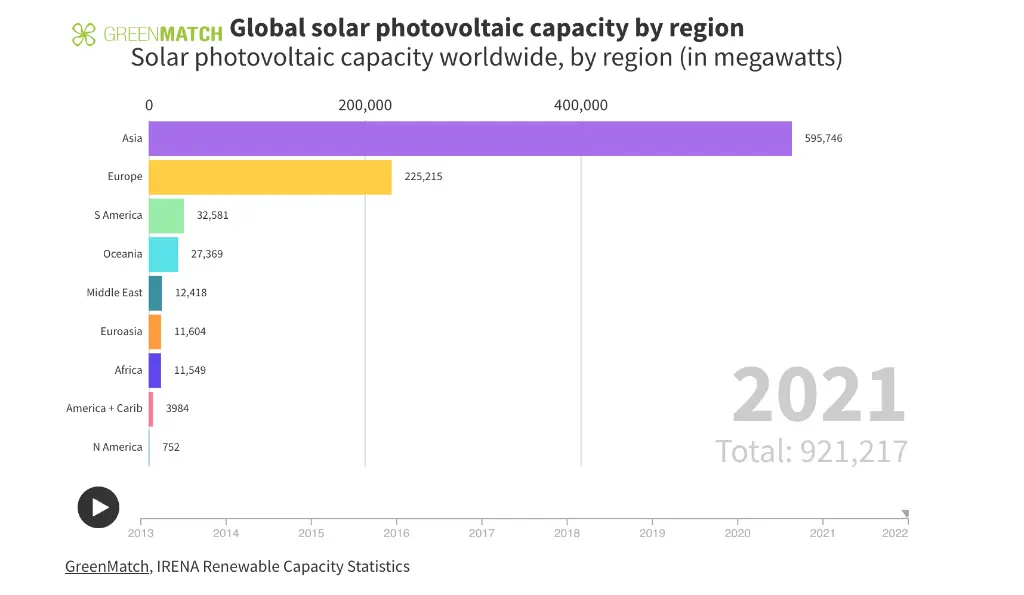Are you curious about solar energy and asking yourself, “Is solar renewable, or it’s just a myth?”. Check out this article to determine how it can benefit you and the planet.
We’ve gathered only proven info about solar energy sustainability. You will determine how clean electricity can change society’s energy generation habits and benefit the environment. By the end, you’ll be well-equipped with information about the future of solar energy and have enough knowledge to decide whether it fits you.
Sustainability of Solar Energy
Coal power plants account for 45% of electricity generation in the USA. They have an extremely negative impact on the environment, and that’s why more and more people are switching to greener sources. Solar power is one of the most accessible alternatives. Currently, it’s one of the most sustainable options on the market.
The Sun produces more energy in an hour than humanity uses in a century. So, answering the question “Is solar renewable?” it’s safe to say that it’s one of the most renewable energy sources.
Another common question is, “Why are solar panels good for the environment?”. To answer this, we want to demonstrate the sustainability of this eco-friendly energy source.
Solar production doesn’t emit air pollutants during operation. Solar power systems produce between 0.08 and 0.2 pounds of carbon dioxide equivalent per kilowatt-hour. Natural gas and coal production release far more CO2 emissions, 0.6-2 lbs of CO2E/kWh) and 1.4-3.6 lbs of CO2E/kWh, respectively. So, switching to solar energy lowers the greenhouse effect.
Widespread solar adoption slowly but surely lessens dependence on conventional energy sources. Solar energy sustainability promotes green energy adoption in residential and commercial sectors.
However, you should remember that the panel manufacturing process creates hazardous waste, mostly used to clean and purify the semiconductors. Many solar manufacturers and installers implement recycling practices to minimize manufacturing negative influence.
Large-scale solar farms require significant land area. Solar facilities may hinder existing land uses and impact the use of nearby spots, such as wilderness areas or recreation sites.
Many solar farms are placed on grounds already cleared by agriculture to minimize this negative aspect. Some companies market themselves as eco-friendly energy providers. They plant native grasses in the selected region and install solar panels on top of them. Panels’ average lifespan is 25-30 years. During that period, the ground has enough time to recoup its fertility.
Benefits of Solar Energy
Solar energy has earned popularity due to its environmental, financial, economic, and social benefits. First of all, let’s focus on ecological advantages:
- Clean power production. Sustainable solar power generation doesn’t produce harmful greenhouse gasses or air pollutants during operation.
- Renewable energy source. The Sun energy is essentially limitless, unlike fossil fuels, which are finite resources.
- Reduced reliance on fossil fuels. The more communities adopt green solar panels, the less reliant they will be on traditional fuels. It reduces environmental damage associated with fossil fuel extraction, transportation, and combustion.
Speaking of financial benefits, you’ll see reduced electricity bills and increased home value. Generally, homes with solar panels increase their market value by 3-6%. If you own a median-valued home that costs $400,000, you can sell it for $410,000-420,000.
Solar energy is also an economic growth driver. This industry creates thousands of new jobs each year. It needs engineers, installers, sellers, and people who provide high-quality maintenance.

Source: Visual Capitalist
The future of solar energy is full of social benefits. It provides eco-friendly electricity to underserved areas and nourishes independent off-grid living. You can power whole communities and cities with a solar farm and its micro- and macro-grids. For instance, Nevada’s Copper Mountain Solar Facility is powerful enough to electrify more than 80,000 average homes.
The Sun’s energy can also be used in processes vital to providing clean drinking water, expanding solar energy sustainability to other critical utilities. Modern solar-powered purification and desalination systems utilize solar energy to supply drinking water to communities lacking traditional treatment plants. Substituting diesel-powered pumps with solar alternatives presents a sustainable and economical solution for well and borehole water extraction.
The benefits of eco-friendly solar energy extend far beyond environmental and economic advantages. It can also play a crucial role in advancing health, particularly in underserved communities and remote areas, where it will provide a dependable source of electricity. It ensures the uninterrupted operation of critical medical equipment, lighting, and refrigeration needed to store vaccines and medications.
That’s why the future of solar energy in remote communities is predetermined. We will see how more societies and groups use it to provide power, clean water, and healthcare in remote locations.
Future of Solar Energy
The future of solar energy is becoming bright! According to the International Renewable Energy Agency (IRENA) forecasts, renewable electricity will account for 85% of worldwide energy production, and solar energy will be one of the most dominant sources of global electricity generation by 2050.

Source: GreenMatch
The International Energy Agency (IEA) predicts that renewable capacity will meet a significant portion of global power generation by 2025, with solar PV expected to contribute a whopping 4.5% of total global electricity generation.
The costs of solar energy have significantly decreased within the last decade, and this trend will continue. Meanwhile, panels will become more efficient and productive at capturing sunlight and converting it into electricity. We will see the integration of AI in the solar industry, which will optimize performance and enhance energy distribution efficiency.
To achieve the maximum possible sustainability for solar energy in the future, we should also overcome current challenges like manufacturing pollution and land usage. Manufacturing processes constantly evolve to minimize usage and reuse valuable materials like silicon.
Land usage is another valid concern. To minimize its impact and increase solar sustainability, many solar farms install panels on previously disturbed land, such as brownfields and abandoned mines.
Another typical placement is agricultural fields that were used to the point that they became infertile. The future of solar energy lies in the ability to implement it into the current ecosystems and make them more sustainable. Those communities that accept this challenge will begin seeing a cleaner environment near them sooner than expected.
Encouraging rooftop solar installations on homes, businesses, and other structures maximizes solar power generation without taking up additional ground space. We will see more and more small scattered solar systems in cities and remote areas.
Wrapping Up: Why Are Solar Panels Good For The Environment
The Sun’s energy offers a powerful solution for a sustainable future. Now you understand why solar energy is important: it’s clean, renewable, and helps combat climate change. However, to achieve solar energy sustainability, we should overcome manufacturing and land use challenges within the next few years.
Ready to become part of the future of solar power? Get a free solar quote to determine how much you can save on your electricity bills and contribute to a cleaner, more sustainable future. Start your eco-friendly journey today!
Frequently Asked Questions
Is solar renewable?
Yes, solar panels are a source of renewable energy. Once installed, panels gather the Sun’s energy until you remove them. The sun produces more energy in an hour than humanity will use within a century, so it’s safe to say that panels produce green energy from renewable sources.
Are solar panels environmentally friendly?
Yes, since they generate clean energy and use renewable resources to produce electricity. While solar farms require space, they can often occupy degraded land or integrate with existing structures.
How do solar panels help the environment?
Solar panels significantly benefit the environment by reducing emissions, preserving natural resources, reducing water usage, and providing eco-friendly land use. Thus, they achieve solar energy sustainability.
Why are solar panels good for the environment?
Solar panels produce clean energy that doesn’t rely on fossil fuels. It translates to cleaner air and significantly reduced man-made contribution to climate change. Compared to traditional power plants, solar panels have minimal water usage needs.


